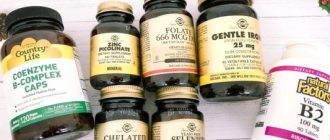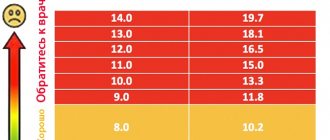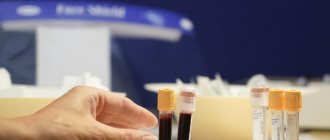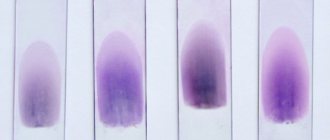How to increase hemoglobin: Pixabay Lack of iron in the body causes the development of complex diseases of internal organs. This condition is especially unsafe for pregnant women and young children. Doctors have recipes on how to get rid of anemia using non-drug means. Let's take a closer look at how to increase hemoglobin using folk remedies and subsequently prevent iron deficiency in the body.
Beet
Beets are the number one vegetable that is recommended to be consumed if you have low hemoglobin levels. The root vegetable contains vitamin A, B vitamins, microelements - iodine, magnesium, zinc, iron, which have a positive effect on the state of the circulatory system and strengthen the immune system.
In addition to its beneficial qualities, beets are a tasty and nutritious vegetable. In addition, it retains all its beneficial properties after heat treatment.
Rules of use
If the level of hemoglobin in the blood is low, it is recommended to eat beets 3-6 times a week. It can be juice, salad, or baked vegetables.
Did you know? In ancient times, only beet leaves were eaten, and the fruit was used to prepare medicinal decoctions.
Even if there are no contraindications, the root vegetable should not be consumed in large quantities. It is necessary to gradually introduce it into the daily diet so that the body can adapt and allergic reactions do not occur.
Chemical composition of the vegetable
Beets are a plant related to chard and spinach. But, unlike them, they eat not only greens, but also root vegetables. These 2 edible parts of beets have different nutritional values and chemical compositions. For example, greens are considered non-starchy and low-carb, while roots contain more starch and carbohydrates, as well as fiber. There are some differences in the vitamins and minerals contained in the product.
| Elements of chemical composition | Contents of 100 g of raw beets (root vegetables) | Contents of 100 g of raw beet greens | |
| Calories | 43,0 | 22,0 | |
| From carbohydrates | 37,1 | 15,5 | |
| From fats | 1,4 | 1,1 | |
| From protein | 4,5 | 5,4 | |
| Carbohydrates | 9.6 g | 4.3 g | |
| Alimentary fiber | 2.8 g | 3.7 g | |
| Starch | 0.0 g | 0.0 g | |
| Sugar | 6.8 g | 0.5 g | |
| Fats | 0.2 g | 0.1 g | |
| Saturated fats | 0.0 g | 0.0 g | |
| Monounsaturated | 0.0 g | 0.0 g | |
| Polyunsaturated | 0.1 g | 0.0 g | |
| Omega-3 fatty acids | 5.0 mg | 4.0 mg | |
| Omega-6 | 55.0 mg | 41.0 mg | |
| Squirrels | 1.6 g | 2.2 g | |
| Vitamins | |||
| A | 33.0 IU | 6326.0 IU | |
| C | 4.9 mg | 30.0 mg | |
| E (alpha tocopherol) | 0.0 mg | 1.5 mg | |
| TO | 0.2 mcg | 400 mcg | |
| Thiamine | 0.0 mg | 0.1 mg | |
| Riboflavin | 0.0 mg | 0.2 mg | |
| Niacin | 0.3 mg | 0.4 mg | |
| B6 | 0.1 mg | 0.1 mg | |
| Folic acid | 109 mcg | 15.0 mcg | |
| B12 | 0.0 µg | 0.0 µg | |
| Pantothenic acid | 0.2 mg | 0.3 mg | |
| Kholin | 6.0 mg | 0.4 mg | |
| Betaine | 129 mg | 0.0 g | |
| Minerals | |||
| Calcium | 16.0 mg | 117 mg | |
| Iron | 0.8 mg | 2.6 mg | |
| Magnesium | 23.0 mg | 70.0 mg | |
| Phosphorus | 40.0 mg | 41.0 mg | |
| Potassium | 325 mg | 762 mg | |
| Sodium | 78.0 mg | 226 mg | |
| Zinc | 0.4 mg | 0.4 mg | |
| Copper | 0.1 mg | 0.2 mg | |
| Manganese | 0.3 mg | 0.4 mg | |
| Selenium | 0.7 mcg | 0.9 mcg | |
| Sterols | |||
| Cholesterol | 0.0 mg | 0.0 mg | |
| Phytosterols | 25.0 mg | 21.0 mg | |
| Water | 87.6 g | 91.0 g | |
| Caffeine | 0.0 mg | 0.0 mg | |
| Theobromine | 0.0 mg | 0.0 mg | |
Carbohydrates
A cup of raw beets contains about the same amount of calories and carbohydrates as one serving of fruit. Therefore, when following a low-carb diet, it is necessary to keep this in mind. Carbohydrates in beets are formed from both natural sugar and dietary fiber. Fiber helps regulate sugar levels in the body, increases feelings of fullness, and helps lower cholesterol.
The root vegetable has an estimated glycemic index of 64, making it a high GI food. However, the glycemic load (which depends on serving size) is only 4 units.
Fats
There is almost no fat in a standard serving of beets. A small amount of it is polyunsaturated fat, which is considered healthy. But keep in mind that some cooking methods can increase the fat content of beets. For example, if you fry it in vegetable oil, the amount of fat per serving will increase.
Squirrels
Beets are not a high protein food, but they do contain some beneficial amino acids. Each serving of the root vegetable contains approximately 1.6 g of protein.
Vitamins and minerals
Beets are a very good source of folate and manganese, as well as potassium and fiber. Folate is important for DNA synthesis and preventing neural tube defects during pregnancy, while manganese is a component of antioxidant enzymes and helps break down glucose and proteins. Potassium helps lower blood pressure, and fiber is important for digestive health.
Beets are an excellent food for hemoglobin in the blood because they are a good source of iron and vitamin C (which helps store iron in the body). Ascorbic acid also regenerates and reactivates red blood cells and helps oxygenate the body.
One serving of beet slices contains 6% of the daily intake of iron and 37% of folic acid. Iron helps strengthen hemoglobin in red blood cells, which carry oxygen throughout the body.
Beet leaves are rich in vitamins B6 and K, iron, magnesium, potassium, copper, manganese and antioxidants. They have the same nutritional value as other dark green leafy vegetables (chard and spinach): they are very low in carbohydrates and high in healthy vitamins and minerals.
Beet juice
To prepare the juice, fresh medium-sized root vegetables are used. Vegetables are peeled and passed through a juicer. You can grate the beets and squeeze out the juice.
There are two options for drinking juice:
- freshly prepared;
- 2 hours after the product has been in the refrigerator.
There is also a third option: beet juice is mixed with carrot, apple or tomato juice. The main thing is that all the ingredients of the drink are fresh. This method of consumption increases the concentration of nutrients in the drink, which contributes to the overall health of the body.
Read more about the properties of beet juice.
Salads
To increase iron levels in the blood, you can prepare a beet salad. The basic rule is to use only fresh vegetables and give preference to natural dressings.
Beetroot, carrot and honey salad
Ingredients:
- beets: 1 pc.;
- carrots: 1 pc.;
- honey: 1 tbsp. l.
Vegetables are thoroughly washed and chopped using a grater, mixed and honey is added. The amount of honey can be changed (to taste).
Important!
Beets have a laxative effect, so people with gastrointestinal problems should not consume the vegetable in large quantities.
Salad of beets, dried fruits and nuts
Ingredients:
- beets: 2 pcs.;
- dried fruits: 150 g;
- walnuts: 100 g;
- honey, sour cream: to taste.
The beets must be boiled, peeled and grated. Large dried fruits (dried apricots or prunes) can be cut, nuts can be chopped. Mix all ingredients. Season with honey or sour cream.
This salad helps increase the level of hemoglobin in the blood, strengthens the immune system and quenches hunger.
How to raise hemoglobin with folk remedies
If there are contraindications for taking iron-containing pharmaceuticals, then how to increase hemoglobin in an adult? Let's consider the most effective treatment options:
How to quickly increase hemoglobin: juices from fruits and vegetables
At an appointment at a family planning center when examining a pregnant woman at 17 weeks, I noticed the patient’s unnatural pallor and lethargy.
The expectant mother complained that lately she has often been sleepy, she feels tired, she feels stuffy all the time, and she has already lost consciousness three times. Blood pressure is below normal - 90/60, pulse is weak.
After the results of a general blood test came back, it turned out that hemoglobin had decreased (89 g/l). This means that the woman developed moderate anemia.
The benefits of juices: Romanova O. Healing juices. 100 recipes. - M.: Vector, 2009.
A similar condition at 16–22 weeks of pregnancy is a particularly common occurrence, because during this period the fetal circulatory system is connected to the mother’s body. By this time, the pregnant woman’s natural iron reserves have been depleted.
In this case, a regular review of nutrition is not enough. How to increase hemoglobin? It is undesirable to use medications, so folk remedies for increasing hemoglobin - fruit and vegetable juices - will come to the rescue.
How to quickly raise hemoglobin with juices and herbs? For low hemoglobin, I recommend the following recipes:
- carrot and pomegranate juice (100 ml each);
- carrot-beet juice (100 ml, mix ingredients in equal proportions);
- beetroot-apple juice with cranberry juice (50 ml of each ingredient);
- lemon-apple juice with the addition of carrot-beetroot mixture (50 ml each).
To enhance the effect of carrot-beet juice, add celery juice or 1 tbsp. l. grated fennel root.
Carry out juice therapy for seven days. Take your drinks half an hour before breakfast. At the same time, remember that the benefits of vegetables and fruits are individual for everyone. Therefore, before you start drinking juices from them, visit your doctor who will give professional recommendations.
How to increase hemoglobin: smoothies
Pregnant women know the dangers of anemia (preeclampsia, threat of miscarriage, oxygen starvation of the fetus, which causes impaired brain activity). Therefore, they often ask how to increase hemoglobin quickly. I recommend (if there is no individual intolerance) to start the morning with an iron-containing smoothie as a breakfast component.
We raise hemoglobin with tasty and nutritious drinks prepared according to the following recipes:
- Mix beetroot and carrot juice (125 ml each) with 150 g of fresh, peeled and pureed kiwi and 150 g of chopped spinach, add 1 tsp. honey
- Puree the orange and peach (2 pieces each) and dilute with 250 ml of a mixture of the juices of these fruits, as well as 125 ml of grape juice.
- Grind strawberries and dates (6 pcs.), red algae (1 tbsp.) in a blender and add 125 ml of grapefruit juice.
- Grind cherries and green grapes (100 g each) in a blender with the kernel of one walnut.
- Puree a handful of blueberries and green grapes.
- In equal portions, mix and blend blackberries, raspberries, strawberries and kiwi. Add a little honey if necessary.
If you don’t know how to increase hemoglobin in a picky child, then sweet and delicious smoothies like these will be a godsend. The only limitation is to give them to children no more than 2 times a day and add only those ingredients that do not cause an allergic reaction. If you notice any unwanted symptoms, be sure to contact a medical facility.
carrot juice
Fresh carrot juice is a tasty and healthy drink that increases hemoglobin levels in the blood. Due to the content of ascorbic acid and iron, the drink has a positive effect on the cardiovascular system and strengthens the body.
It is best to drink carrot juice in the morning, before meals.
The juice can be drunk either pure or diluted (with water). Quite often, carrot product is mixed with beet juice. A mixture of several vegetable juices strengthens the immune system and gives the body a boost of energy.
Important! Carrot juice contains a lot of phytoncides, which normalize the functioning of blood vessels and strengthen the heart muscle.
Effect on hemoglobin
First of all, beets are valued for their active participation in hematopoietic function. Due to its high iron and copper content , the vegetable is indispensable for blood renewal. It is also significant for hemoglobin levels.
In addition to iron, beet pulp contains a lot of vitamin B9, which prevents anemia and even prevents leukemia. Particularly effective for anemia:
- pickled beets;
- beet juice
It is also recommended to mix beet juice with freshly squeezed carrot juice.
Researchers and doctors also made a very interesting discovery: they discovered that beet protein is half similar in structure to hemoglobin in human blood. Research is currently underway into the possibility of converting a beet protein compound into a human blood substitute.
Beets also thin the blood, preventing blood clots.
Salads
Fresh carrot salads are a great alternative for those who don't have a juicer or the time to extract the juice. The dishes are easy to prepare, but no less healthy than fresh juice.
Cabbage, carrot and beet salad.
Components:
- beets: 2 pcs.;
- carrots: 2 pcs.;
- white cabbage: 1 fork;
- greens, olive oil, lemon juice: to taste.
The cabbage is finely chopped, and the carrots and beets are chopped using a grater. Mix the vegetables, add fresh herbs and olive oil with lemon juice.
Carrot and apple salad.
Components:
- apple: 2 pcs.;
- carrots: 2 pcs.
Peel and grate the carrots; remove the seed chambers from the apples. Chop the fruit. You can add salt and pepper to the salad.
Low hemoglobin during pregnancy
According to statistics, every third pregnant woman has low hemoglobin levels. This is due to the fact that most of the iron “goes” to maintain the vital functions of the fetus. Lack of iron in the blood negatively affects both the health of the expectant mother and the condition of the child.
Therefore, during pregnancy, it is necessary to monitor the level of hemoglobin in the blood. This is done using an analysis that reveals the level of hemoglobin and red blood cells and the ratio of blood cells and fluid.
Folk remedies for anemia: infusions and decoctions of medicinal herbs
At the appointment, a man who suffered from chronic renal failure spoke about a deterioration in his general condition after special therapy. Low blood pressure, sweating, loss of appetite, and pale skin made a fellow therapist suspect problems with blood oxygen saturation. Indeed, a blood test showed that the patient had mild anemia.
Oxygen release: Human body. Medical encyclopedia. - M.: DeAgostini, 2021.
The man categorically refused drug treatment because he had just been discharged from the hospital. Therefore, the question arose, how to quickly increase hemoglobin using folk remedies?
In this case, in order to increase hemoglobin, folk remedies should be sought in a green pharmacy - select herbal compositions that will help the body recover and stimulate the natural production of red blood cells.
To raise hemoglobin using folk remedies, prepare the following infusions and decoctions:
- From lungwort (2 tablespoons per 250 ml of boiled water).
- From blackberries, St. John's wort and clover (1 tbsp per 500 ml of water).
- From apothecary dandelion (1 tbsp per glass of boiling water).
- From rosehip: 4 l. natural remedy, pour 1 liter of water and add 3 tbsp. l.:
- dried strawberries;
- rowan;
- honey
Infuse decoctions of medicinal herbs for 15 minutes in a steam bath and take 100 ml half an hour before meals.
Prepare rosehip-based tincture as follows:
- Pour the required amount of the mixture into a thermos or container that closes tightly.
- Pour all 0.5 liters of boiling water.
- Wrap the container and leave for 50 minutes.
If desired, sweeten with 1 tsp. honey, rosehip decoctions with strawberries or rowan.
The above folk remedies for increasing hemoglobin, their proportions are suitable for adolescents over 14 and adults. If you are looking for how to increase iron in the blood using folk remedies for newborns and children of primary school age, then focus on the following measures:
- 10 g of collection (1 dessert spoon) - for infants up to 1 year;
- 25–30 g (2 tbsp.) – for children under 12–14 years old.
Such recipes are suitable for pregnant women and babies, since they are natural stimulators of protein synthesis in human blood and natural sources of iron. However, remember that self-medication can lead to serious consequences. Be sure to consult your physician before using these formulations.
Folk remedies for raising hemoglobin will also help those whose anemia is chronic or caused by taking certain medications (for example, chemotherapy). In this case, it is better not to overload the body with chemicals.
Peculiarities
Depending on the stage of pregnancy a woman is in, the level of hemoglobin in the blood changes:
- first trimester: 112–165 g/l;
- second trimester: 108–144 g/l;
- third trimester: 110–140 g/l.
For comparison, in non-pregnant women the norm is 120–160 g/l.
Indicators below the above values indicate a lack of iron in the blood, which is manifested by symptoms such as:
- weakness;
- lethargy;
- dizziness;
- dyspnea.
If anemia is not treated in time, a serious threat to health can arise, including miscarriage. For prevention purposes, you should take vitamin complexes and increase your consumption of foods that increase iron levels.
Low hemoglobin: treatment at home
According to WebMD statistics, anemia, even in developed countries where there is no shortage of food and good environmental conditions, occurs in 6% of people. This condition is caused by a decrease in hemoglobin.
Hemoglobin is a complex protein compound. It has a structure that holds the smallest particles of carbon dioxide, and most importantly, oxygen. This biochemical process is the basis of the body’s life.
The hemoglobin norm for healthy people varies depending on gender and age:
- 120–140 g/l - for women;
- from 120 g/l - for children;
- 130–170 g/l - for men.
At one of the appointments, a 30-year-old woman who had recently suffered from bilateral pneumonia complained to me that she still felt weak, tired quickly, and felt emotionally depressed.
During an external examination, I found that the woman’s skin was pale and her palms were sweaty. The results of the CBC showed that moderate anemia was developing - hemoglobin dropped to 85 g/l.
Blood vessels: Human body. Medical encyclopedia. - M.: DeAgostini, 2016.
The development of anemic syndrome in those who have had community-acquired pneumonia is a common occurrence, as my colleagues A. Budnevsky, I. Esaulenko and others say. That is why it is important to regularly visit the doctor and monitor their health.
How to treat low hemoglobin in this case? The woman asked how to quickly increase hemoglobin without chemical iron-containing drugs and get vitamins naturally. The patient was recommended a special diet, rest and walks. After two weeks, the patient’s condition stabilized, hemoglobin approached 115 g/l.
Thus, if a blood test shows low hemoglobin, doctors may prescribe medication. But this is not always resorted to, because sometimes it is enough to treat anemia with folk remedies.
Ways to raise hemoglobin levels using carrots and beets
Carrots and beets are vegetables that should be in a pregnant woman’s diet. Root vegetables contain many useful substances that will help maintain the proper condition of the expectant mother and child. In addition, regular consumption of the above vegetables helps maintain normal blood pressure.
Root vegetables are introduced into the menu in the form of salads and juices. They are stewed, baked, boiled
Contraindications
And although beets and carrots are considered healthy vegetables, there are a number of contraindications in which you should refuse to eat them or significantly reduce their amount in the diet.
- It is not recommended to consume root vegetables for persons with a history of the following ailments:
- diabetes;
- urolithiasis disease;
- stomach diseases;
- thyroid diseases;
- individual intolerance.
You should be careful when consuming carrots and beets if you have hypervitaminosis. A large amount of these vegetables in the diet can cause nausea, dizziness and intoxication of the body.
Beets and carrots are vegetables that strengthen the human body, increase the level of hemoglobin in the blood and provide energy for the whole day. You should include them in your diet on an ongoing basis, because the best treatment is prevention.











